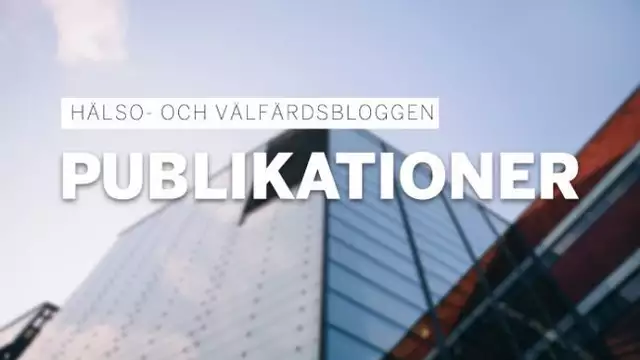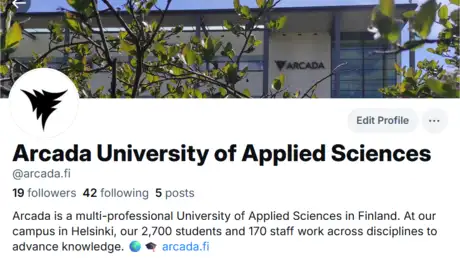
Jonas Tana, PhD., senior lecturer, Department of Healthcare, jonas.tana
‘Tis the season. This means that Mariah Carey’s ‘All I want for Christmas’ has started its yearly climb in YouTube statistics, Bing Crosby’s ‘White Christmas’ can be heard in almost all department stores, and Whams ‘Last Christmas’ torrents almost all radio stations. This can for many trigger different feelings, from joy and delight to nausea, stress and anxiety, as the Christmas season has a varying effect on individuals health.
Christmas season related health issues have been studied from the perspective of mental illness and misuse. According to overall findings, the Christmas holiday appears to result in an increase in certain types of psychopathology during the holiday, such as worsening of mood and alcohol-related fatalities (Sansone & Sansone, 2011). Feelings of loneliness, anxiety, helplessness and depression have been reported to be the most common themes in relation to Christmas season (Halpern et al., 1994; Velamoor et al. 1990). Velamoor et al. (1999) reported that one common stressor was being without a family. In addition to this, the use of psychiatric emergency services has shown a slight increase in the days following Christmas (Halpern et al., 1994). Moreover, Peretti et al (1980) concluded in their study, that one of the most relevant factors in Christmas related anxieties and depressions is the belief in the myth that everyone else is having a jolly good time and are engaged in loving family relationships. At the moment, the perceived deficiencies in one’s social relationships, that is being alone, lonely or feeling like an outsider are to some extent enhanced todays cultural zeitgeist that worships social media, virtual relationships and full-time online connections. Although, there are still many open questions and possibilities worth studied concerning the effects of our hyper-connected existence on our health and relationships (Junttila et al. 2016). This is highly relevant today, during the Covid-19 pandemic, as the use of social media has been shown to both alleviate (Cauberghe et al., 2021; Zhang et al, 2021) and aggravate (Bonsaksen et al., 2021) feelings of loneliness.
Loneliness has been shown have serious negative consequences on people’s mental and physical health, and can trigger mental and somatic diseases as well as excessive alcohol consumption (Junttila et al. 2016). The is a suggested relationship between loneliness and alcohol abuse, but this issue has remained inconclusive because of a lack of controlled studies (West et al. 1986). In relation to this, Poikolainen et al. (2002) found in a review of deaths due to alcohol poisoning in Finland, that a peak death rate was visible during the Christmas holidays. The same phenomenon has also been found in Denmark by Mäkelä et al (2005), who found a higher rate of observed deaths due to alcohol poisoning during Christmas season.
Christmas related loneliness and alcohol consumption can also be studied with the help of infodemiology indicators. These indicators, or metrics, consist of automatically aggregated data on patterns of information on websites, chatter on social media, posts in discussion forums and health information seeking activities in search engines (Eysenbach, 2009). The overall aim of infodemiology is to describe and analyse these online health information and communication patterns to inform public health and public policy (Eysenbach, 2009). Infodemiology metrics can provide a supplement to the more traditional epidemiological data, and thus complement our understanding of some health-related issues. For issues that are associated with stigma, such as mental health related challenges, web data can provide evidence for behaviours that are rarely reported to healthcare professionals, and thus left outside the traditional data harvesting done within healthcare (Ayers et al. 2014). Tana et al (2019) found in a supply-based (i.e. what is being published on the Internet) infodemiology study, that in the largest Finnish discussion forum, Suomi24, discussions in relation to Loneliness show a clear and significant peak in discussion activity during Christmas. The same is visible for alcohol related discussion, as can be seen in Figure 1. The findings are based on longitudinal data, ranging from 1.1.2001 until 31.12.2017, with 162.000+ posts from the Loneliness category and 196.000+ posts in the Alcohol category. The significantly higher activity could be a sign that lonely people interact together during Christmas, in this case online in a discussion forum, as has been shown in previous research (Junttila et al., 2016). As the analysis is one of quantitative nature, the content of the discussions remain unknown, and is a topic for future research here at Arcada.
Figure 1. Yearly discussion forum activity for the topics Loneliness (fi. Yksinäisyys), Weight control (fi. Laihdutus) and Alcohol (fi. Alkoholi) (Tana et al., 2019)
The aim to decrease loneliness has been raised as one of the major areas for societal actions and improvement in Finland (Junttila et al., 2016). To succeed in this, loneliness should be acknowledged and assessed as a form of functional deficit and a major source for social inequality. An investment in creating an understanding for loneliness and behaviours related to it also needed. This is where research comes in. Even though it has been shown that dysfunctions on the micro-level have a noteworthy effect on the macro-level, research on loneliness and related behaviours aimed at decreasing both individual and societal consequences have been scarce (Junttila et al., 2016). Systematic, multidisciplinary and longitudinal research approaches, from which evidence-based, cost-effective and timely optimal interventions can be derived are also still lacking. This is where novel methods, such as infodemiology and analysis of infodemiology metrics can contribute. Moreover, methods like these can be highly motivated because of the fact, already stated earlier, that lonely people tend to connect with other people who are lonely, often online and in social networks (Junttila et al., 2016).
So, it might be “the most wonderful time of the year” for some, but clearly not for all. As loneliness and related challenges are complex and culturally connected, there is yet no one answer to which psychological and social interventions can alter and alleviate the experience of loneliness in a meaningful way (Hickin et al., 2021). As often is the case, more research is needed to shed light on the matter.
References:
Ayers, J. W., Althouse, B. M. & Dredze, M. (2014). Could behavioral medicine lead the web data revolution?. Jama, 311(14), 1399-1400.
Ballard, C., Bannister, C., Davis, R., Handy, S., Cullen, P., & Chithiramohan, R. (1991). Christmas census at a district general hospital psychiatric unit. Irish Journal of Psychological Medicine, 8(1), 46-47.
Bonsaksen, T., Ruffolo, M., Leung, J., Price, D., Thygesen, H., Schoultz, M., & Geirdal, A. Ø. (2021). Loneliness and its association with social media use during the COVID-19 outbreak. Social Media+ Society, 7(3), 20563051211033821.
Cauberghe, V., Van Wesenbeeck, I., De Jans, S., Hudders, L., & Ponnet, K. (2021). How adolescents use social media to cope with feelings of loneliness and anxiety during COVID-19 lockdown. Cyberpsychology, Behavior, and Social Networking, 24(4), 250-257.
Eysenbach, G. (2009). Infodemiology and infoveillance: framework for an emerging set of public health informatics methods to analyze search, communication and publication behavior on the Internet. Journal of medical Internet research, 11(1).
Hickin, N., Käll, A., Shafran, R., Sutcliffe, S., Manzotti, G., & Langan, D. (2021). The effectiveness of psychological interventions for loneliness: A systematic review and meta-analysis. Clinical psychology review, 102066.
Hillard, J. R., Holland, J. M., & Ramm, D. (1981). Christmas and psychopathology: data from a psychiatric emergency room population. Archives of general psychiatry, 38(12), 1377-1381.
Halpern, S. D., Doraiswamy, P. M., Tupler, L. A., Holland, J. M., Ford, S. M., & Ellinwood Jr, E. H. (1994). Emergency department patterns in psychiatric visits during the holiday season. Annals of emergency medicine, 24(5), 939-943.
Junttila, N., Topalli, P. Z., Kainulainen, S., & Saari, J. (2016). The portrayal of lonely Finnish people. In The correlates of loneliness (pp. 156-183).
Mäkelä, P., Martikainen, P., & Nihtilä, E. (2005). Temporal variation in deaths related to alcohol intoxication and drinking. International journal of epidemiology, 34(4), 765-771.
Peretti, P. O. (1980). Holiday depression in young adults. Psychologia, 23(4), 251-255.
Poikolainen, K., Leppänen, K., & Vuori, E. (2002). Alcohol sales and fatal alcohol poisonings: a time‐series analysis. Addiction, 97(8), 1037-1040.
Sansone, R. A., & Sansone, L. A. (2011). The christmas effect on psychopathology. Innovations in clinical neuroscience, 8(12), 10.
Sauer, J., Ayonrinde, O., Lawal, R., Finn, M., & Ojo, A. (2002). Psychiatric emergencies and the millennium: An international study. International journal of social psychiatry, 48(2), 122-125.
Tana, J., Eirola, E., & Eriksson-Backa, K. (2019). The aspect of time in online health information behaviour: a longitudinal extensive analysis of the Suomi24 discussion forum. Informaatiotutkimus, 38(2), 7-31.
Velamoor, V., Voruganti, L., & Nadkarni, N. (1999). Feelings about christmas, as reported by psychiatric emergency patients. Social Behavior & Personality: an international journal, 27(3).
West, D. A., Kellner, R., & Moore-West, M. (1986). The effects of loneliness: a review of the literature. Comprehensive psychiatry, 27(4), 351-363.
Zhang, K., Kim, K., Silverstein, N. M., Song, Q., & Burr, J. A. (2021). Social media communication and loneliness among older adults: the mediating roles of social support and social contact. The Gerontologist, 61(6), 888-896.


